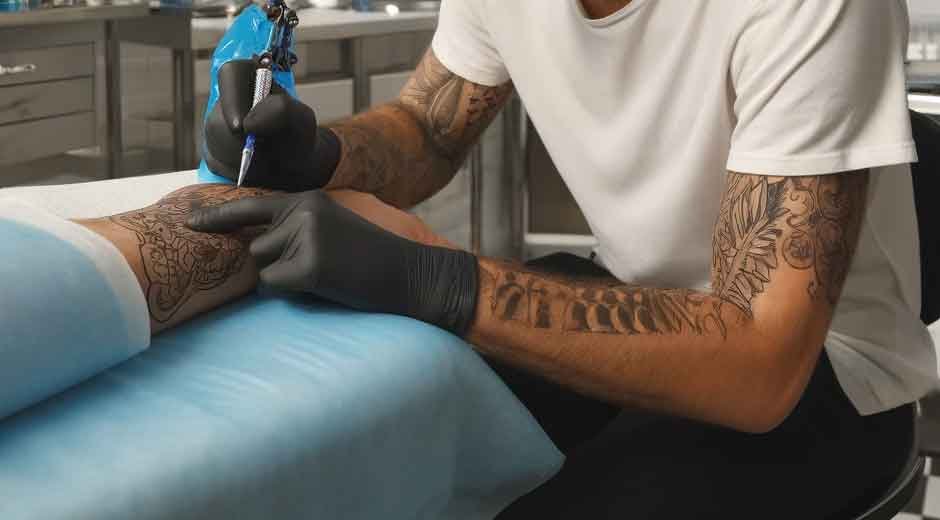Skip to the good bit
ToggleGetting a hair tattoo is a non-invasive way to address male or female pattern baldness. Also known as scalp micropigmentation (SMP), hair or scalp tattoos are semi-permanent solutions to receding hairlines and thinning hair. The treatment can also be used to enhance the beard, sideburns, or moustache. Here are a few myths and facts about scalp tattoos:
Myth: They’re Not Permanent Body Tattoos
SMP involves using a special machine to deposit tiny pigments into the layer beneath your scalp. The pigments produce deposits that mimic the appearance of recently shaved hair follicles. A hair tattoo can last several years with minimal maintenance and occasional retouching. Although they involve pigments and tattooing, SMP is different from permanent body tattoos. The technique involves carefully selected cosmetic pigments instead of tattoo ink.
SMP results naturally diminish after a few years, but you can use timely retouching to maintain the appearance for as long as you want. Scalp tattoos help conceal bald spots and thinning by creating tiny dots that look like your natural hair follicles. SMP practitioners select the pigment that best matches your scalp and complexion.
Fact: They’re Used Beyond Covering Baldness
SMP will address baldness by replicating the appearance of natural hair follicles. The technique is also used to restore a receding hairline or restore the look of density to thinning areas. Other applications include concealing scalp scars caused by accidents, surgery, or hair transplant procedures, such as FUT and FUE. Practitioners have extended the benefits of SMP beyond just the scalp area.
The same technique can be used to mimic the appearance of a full beard, sideburns, goatees, and moustaches. Practitioners also use it to conceal facial scars around the beard area or other places being treated. Since pigments come in a variety of colors, your practitioner can find a suitable match for a natural appearance. Experienced SMP artists skillfully create the tiny strokes that cover the exposed skin, resulting in the appearance of dense hair growth.
Myth: They Require High Maintenance
Another myth about scalp tattoos is that they require high maintenance. SMP results are low maintenance once the pigments have settled. A brief downtime is involved immediately after the procedure to allow the tattoos to settle. Your scalp will heal naturally over a few weeks; during this time, follow all aftercare instructions provided by your practitioner.
Avoid touching or scratching the scalp to protect it from irritation. Avoid direct sunlight, swimming pools, spas, and gyms, as well as activities that cause excessive sweating. Once your last scalp has healed, you will be able to resume your normal activities. Treatment usually involves a few sessions spaced weeks apart to allow the scalp to heal. After treatment, you may retouch every few years or as needed. No elaborate maintenance schedules are required.
Fact: They Can Look Quite Natural
Scalp tattoos done by experienced and skilled SMP artists look completely natural. The strokes are strategically positioned and spaced following your natural hair follicles, resulting in a realistic appearance. Practitioners also match the thickness of each dot to your hair. If you have some hair on your head, you can establish a regular shaving schedule to trim the growth. Scalp tattoos should blend seamlessly with your skin and existing hair, but the outcome depends on the practitioner’s skill. You can request a portfolio of previous clients to assess the practitioner’s quality of work.
Myth: They Don’t Involve Aftercare Steps
Getting a scalp tattoo involves using tiny needles that deposit dots on the scalp. The technique produces tiny wounds that heal within a few days or weeks. Practitioners may use local anesthesia to reduce discomfort and recommend specific cleansers, moisturizers, and sunscreens to their clients. To achieve the best outcome, follow all aftercare instructions carefully.
Avoid all activities, exposures, and products your practitioner prohibits. If you experience any unusual symptoms, contact the practitioner for professional intervention. Ask about any activities you suspect might interfere with the results. The aftercare is basic but requires strict adherence to the guidelines. You can resume your routines once the scalp is fully healed.
Get a Hair Tattoo Today
Scalp micropigmentation gives you an alternative to invasive hair transplants. The treatment is also highly effective when performed by an experienced artist with the proper qualifications and training. Contact an SMP practitioner today to find out more about their professional hair tattoo services.







